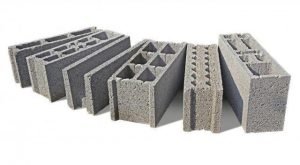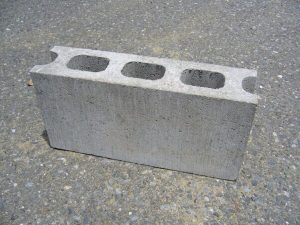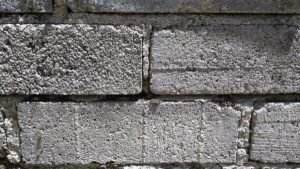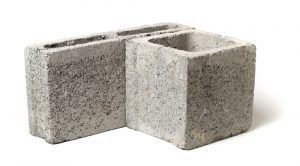Types of concrete block with Further 8 classification
Types of concrete blocks depend upon the structure, size, shape, and manufacturing process of concrete blocks; it is classified into two categories.
- Hollow concrete blocks.
- Solid concrete blocks.
Solid concrete blocks:

Solid concrete blocks are mainly used on construction projects, which are very heavyweight and manufactured by aggregate. They are tough and provide good stability to the structures.
So for extensive work like force-bearing walls, these solid blocks are well. They are compared to bricks available in large sizes. So, to construct concrete masonry than brick masonry takes less time. A solid concrete block is used in the form of a solid walls construction/cavity wall.
Hollow concrete block:
The void area of Hollow concrete blocks contains greater than 25% of the gross area. Should be more than 50% Solid areas of hollow bricks. Divided into several components of hollow parts based on our requirements. It is manufactured from lightweight aggregates for lightweight building and is easy to install. General use the size hollow concrete blocks are 20 cm X 15cm X30 cm (8inch x 6 inches x12 inch ).
the hollow concrete blocks the face thickness must be at least 2’’ (5cm), and the net area must be 54 to 64% of the gross area. And the 1:6 mortar used a cement aggregate mix in proportion. The hollow concrete blocks used for structural purposes should be at least 450 lb /in2 (3 N/mm2).

Types of hollow concrete block:
- Stretcher concrete block
- Corner concrete block
- Pillar concrete block
- Jamb concrete block
- Partition concrete block
- Lintel concrete block
- Frogged brick concrete block
- Bullnose concrete block
Stretcher concrete block:
Concrete stretcher blocks are used for corners joining in the masonry. It is a widely used concrete hollow block in construction projects. They are kept with length parallel to the face of the wall.

Corner concrete block:
Corner blocks are used in corners of masonry. The ends, like window or door openings, etc., are arranged so that their plane end is visible to the outside, and the other end is locked with the stretcher concrete block.

Pillar concrete block:
It is also called a double corner block. Generally used when two ends of the corner are visible.

Jamp concrete block:
They are used when there is a clear window opening in the wall. They are connected to stretchers and corner blocks.
partition concrete block:
They are generally used to build partition walls. Partition concrete blocks have more significance than the height of breadth. Divided into two into Hollow parts is to three components in case of partition concrete blocks.

Lintel concrete block:
It is also called a concrete beam block used for the purpose of a lintel beam. The lintel beam is generally provided for doors and windows on the top portion, which controls the load coming from the top of the lintel beam.
Frogged brick concrete block:
They contain a frog on its top, along with a header and stretcher-like frog brick.
Bullnose concrete block:
They are similar to corner concrete blocks. Their duties are also the same but corner bullnose bricks when we want rounded edges are preferred.
Aerated autoclaved concrete block:
They are concrete blocks that are lighter and bigger versions of bricks. It is Mostly made with the same bricks ingredients as but with a different composition which makes for cost-cutting the material a vessel.
Paving concrete block:
They are generally square boxes, and rectangular made up of reinforced concrete. Paving concrete blocks are used in road shoulders paving. They are painted with high-visibility concrete so drivers and motorists could see them right away.

Control joint:
Control joint used for making the expansion of vertical share types control joints in constructions. A sealant is used in interlocking units.
We Love Cricket